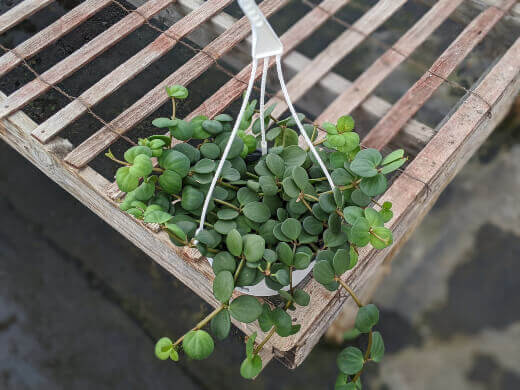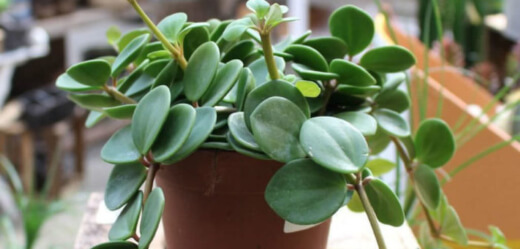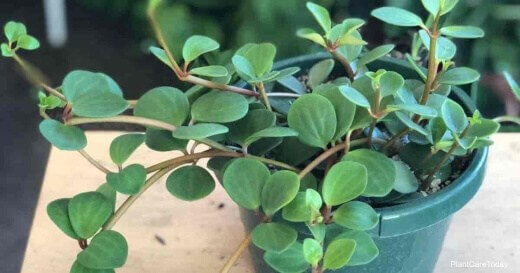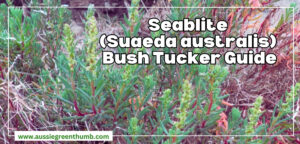Indoor plants aren’t always the easiest to handle, so it’s really great when you find a plant variety which does well inside (as well as survive a little neglect). Peperomia Hope is an ideal option for indoors. Pop it in a macramé hanging basket, or as part of a dish garden, this beauty is a great addition to your home.
More...
While succulents are the go-to for many households, this perennial epiphyte has stunning trailing stems and has been considered the perfect potted plant. It’s not hard to grow, however it is always good to be sure you know everything you’ll need to know.
So, here’s a handbook on growing Peperomia Hope , from propagation, to planting, to care and everything in-between.
What is Peperomia Hope?

Many people tend to mistake the peperomia for a succulent, it is not- even though it may look like it. The most distinguishable feature of the Peperomia Hope is its sprawling foliage, which produces small succulent leaves that are round in shape.
These leaves are patterned with faint, light-green stripes. The peperomia does not produce flowers- but it is evergreen and beautiful year-round. Stemming from the Piperacae family, Peperomia Hope is a hybrid of the Peperomia quadrifolia and Peperomia deppeana.
The full spectrum of the peperomia genus includes up to 1000 tropical and sub-tropical varieties. The peperomia is native to the tropical regions, including the Amazon, in central South America.
As such, the peperomia is quite comfortable in a humid, warmer climate. Again, why it is ideal for indoors. The peperomia is a small, unobtrusive plant that actually has phenomenal air-purifying abilities.
Plus, this epiphyte does not need direct sunlight and tolerates neglect a little better than most, making it a perfect plant for on your desk, on your shelf or hanging from your ceiling.
How to Propagate Peperomia Hope?
The peperomia is incredibly easy to propagate from a leaf cutting, a feature it shares with succulents. Here’s what you need to do start growing:
Take a Cutting
- Remove a cutting, approximately 5 to 8 cm in length, from the stem.
- Ensure the cutting still has one or two leaves on it.
Prepare Your Pot + Soil
- You will need to find a small container or pot with a drainage hole.
- You will want to acquire a well-draining potting mix. Specialists recommend soil with a PH balance of 6 to 6.6 for peperomia plants.
- If your peperomia is not being placed somewhere very dry, or not particularly humid, consider placing your pot on a tray with wet pebbles. This will assist with humidity.
Get Ready to Plant
- Once your pot and soil are sorted, you can plant your cutting in the soil.
- Ensure the leaves on the cutting remain exposed.
- Choose a spot with semi-shade or little direct sunlight.
- It is important that your plant remains in the same place and isn’t moved around during its beginning growing phase.
In the right conditions, your peperomia should grow fairly quickly.
Peperomia Hope Care Guide

As we’ve said, the peperomia is pretty resilient, but making sure to follow its care instructions is equally important.


Get Your Free Guide:
Master Growing Australian Natives eBook
A Must Have Complete Guide for Every Australian Garden
Get Your Free Guide:
Master Growing Australian Natives eBook
A Must Have Complete Guide for Every Australian Garden
Right Environment
- Peperomia do best in humid conditions and temperatures that range between 18°C and 24°C.
- You will want to place your peperomia somewhere where it gets quite a bit of natural light, however, not direct sunlight. Semi-Shaded areas are ideal. Too much sunlight and your leaves will begin to dull.
- If your peperomia suddenly loses many of its leaves, it may be due to a climate change. Try to regulate temperature around your plant.
Avoid Overwatering
- Watering can be done every 7 to 10 days.
- The peperomia is particularly sensitive to overwatering, so be sure that the top soil of your plant has enough time to dry fully between watering.
- You want moist soil not soggy.
- Maybe consider using a mister with your peperomia, as this will prevent over-watering.
- If your leaves begin to wilt or create scab-like protrusions, you may be over-watering your plant.
Fertiliser
- Frequent fertilisation works well for the peperomia.
- Once a month is perfect, particularly in the spring and summer months.
- Avoid adding fertiliser during the winter months.
- Go for a water soluble fertiliser or a balanced liquid plant food.
Pruning
- Pruning is a great way to correct sparse growth of the stems.
- This should be done early in spring.
- Use pruning scissors to lightly remove the stem ends where necessary.
Repotting
- Some people recommend self-watering pots and repotting your peperomia every spring.
- While it is not necessary to do it every year, repotting can be beneficial if you plan to re-enrich the soil or if your peperomia has outgrown its current container.
- Be sure not to go too big with the new pot. This can lead to inadequate soil draining and negatively affect your plant.
You may also want to consider regularly dusting off your peperomia leaves, as this will allow for optimal photosynthesis to occur.
Should you notice the curling of leaves on your peperomia plant, this can be due to over-fertilisation or bugs.

Potential Pests to Look Out For
Especially as it functions as an indoor plant, the peperomia is not particularly susceptible to pests. Therefore, needing the right approach for pest control.
You may be subject to Mealybugs. Mealybugs are small, soft-bodied insects that attach a large variety of indoor plants, and cause damage by sucking nutrients from the plant.
Mealybugs may infest your plant, causing white cottony spots on the underside of the leaves. Leaves will eventually yellow and drop from the plant.
Luckily, these pests are easily dealt with. You can:
- Spray your plant with a steady stream of water to dislodge bugs.
- Treat infected leaves using an insecticidal soap.
Peperomia Hope Diseases
While peperomia are not necessarily prone to disease, there are certain conditions that can affect your plant. Loss of leaves is the first general sign that your peperomia might not be happy.
As mentioned, the peperomia may lose leaves if there is a temperature drop. They are also more susceptible to disease in colder temperatures.
Though not likely, your plant may experience issues with fungi, bacteria and viruses. Diseases which are common to the peperomia genus include:
Ring Spot
- Recognised through brown rings which form and disfigure the leaves.
- Should your plant contract a ring spot, the best treatment is to destroy the plant and avoid it contaminating any other plants.
Edema
- Recognised through small, pimple-like masses which form on the underside of the leaf.
- Plants with low potassium and calcium are particularly susceptible.
- Regulate your soil levels through regular soil testing.
Phytophthora Rot
- Recognised through a visible infection of leaf blades.
- This can be prevented by regular re-potting and ensuring your soil remains well-draining.
For more Peperomia species, check out our growing guides:
Peperomia Hope Frequently Asked Questions
How do you take care of Peperomia Hope?
Peperomia Hope needs bright but indirect light, and temperatures over 18c to really thrive, but the most important thing about caring for these unusual houseplants is keeping a close eye on their soil.
While they need well-draining soil, many are sold in pure coconut husk compost, meaning they can dry out severely. Check the soar regularly and water if it is ever too dry.
How much light does Peperomia Hope need?
Peperomia Hope needs plenty of light, but should never be placed in direct sun. Aim for about 6-8 hours of bright, indirect light per day to keep these stunning succulents happy and healthy.
For me, that means a good east-facing windowsill, where they have loads of light pouring in, but are never hot enough to burn.
Is Peperomia Hope rare?
Peperomia Hope does not exist in the wild, so the only plants that do exist have been bred from cuttings and sold through garden centres and house plant nurseries, making them a rare plant without being too expensive.
How long do Peperomia Hope plants live?
Peperomia Hope can easily live for 15 years, but they tend to last for around 5-10 years in most conditions as they do not have soil to naturally trail into to self-propagate, and their changing temperatures and humidity of our homes means they do suffer slightly compared to the natural relatives.
Are Peperomias hard to keep alive?
Peperomias are pretty low-maintenance house plants, and quite easy to keep alive. Just water them if the soil feels dry and keep them out of direct sunlight where possible. Peperomia Hope is a slow grower, so don’t worry if it seems stunted, it may just be taking some time to adjust to its new home.
Does Peperomia Hope like being crowded?
Peperomia Hope does enjoy being slightly restricted in its pot. Not completely root bound, but fairly packed, and they tend to look at their best with a few plants in a single container, forming that classic tight, Peperomia dome you might expect.
Why is Peperomia called radiator plants?
Peperomia, including Peperomia Hope , is commonly referred to as Radiator Plants, due to their love of warm air currents and hot drafts. They grow really well next to a radiator, or even above an air vent – a position that would kill most house plants.
Should I cut off dead Peperomia leaves?
Any dead, damaged or diseased Peperomia leaves should be cut off as soon as you see them. If you leave them in place they will rot and can infect the rest of the plant. Be careful when snipping so you don’t accidentally cut the stem, or any healthy growth though.
Should I bottom water my Peperomia Hope?
Peperomia Hope can be watered from the top, or from the base, by standing the pot in a tray of room-temperature water. This helps to soak the soil more thoroughly and is generally safer as it does not wet the leaves, and won’t over-humidify the plant once it’s removed from the tray.
Should you mist Peperomia Hope?
Peperomia Hope likes humid environments, but it’s important to note that misting is not the same as humidifying. Misting leaves adds more water, which will add to the humidity in warm rooms, but in cool or temperature spaces, it will lead to standing water and potential disease.
Only mist if you have the right temperature to evaporate the water!
Can I water Peperomia Hope with tap water?
All plants prefer rain water to tap water. It’s more natural, has slightly more acid, and more minerals than treated tap water. However, Peperomia Hope is not sensitive to different waters, so can be watered with tap water.
How to encourage new Peperomia Hope growth?
Feeding peperomia with a foliage-boosting fertiliser, or slow-release pelleted feeds is a great way to feed them without shocking them or over watering. Feeding Peperomia a couple of times a year will go a long way to boosting new growth.

Wrapping Up Our Peperomia Hope Growing Guide
No matter how you look at it, the Peperomia Hope is a great option when looking for that ideal indoor plant, especially for the beginner green thumb. Also see Elephant Ears and Monstera deliciosa for more indoor plant options.
Whether you’re thinking on your desk or in your kitchen, the peperomia is a fabulously ornamental fauna. It’s also a perfect fit for a plant wall – which is all the trend right now. Peperomia also makes really great gifts, especially because they are quite easily cared for.
Most importantly, make sure you pop your peperomia in the perfect spot, with semi-shade and warmer temperatures. It will purify your air while looking pretty, and this- all year round!
You really won’t need more reasons to make this perfect potted plant your next pick. Add a touch of 'hope’ (and some cleaner air) to your home today. So, there you have it.
Your go-to handbook when considering growing the Peperomia Hope in your home. Make sure you give your plant the right soil and just a little bit of love.
Published on January 9, 2023 by Gary Clarke
Last Updated on October 4, 2024




